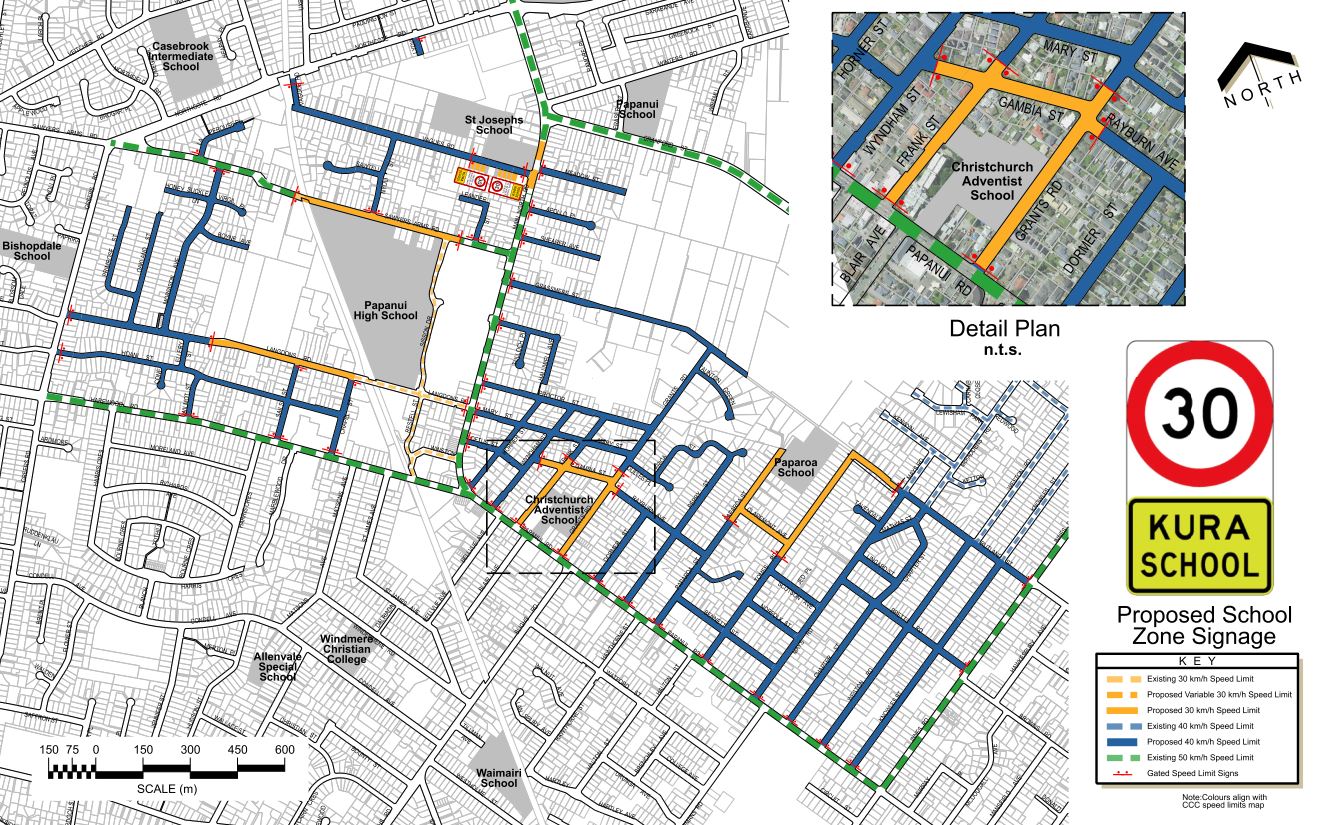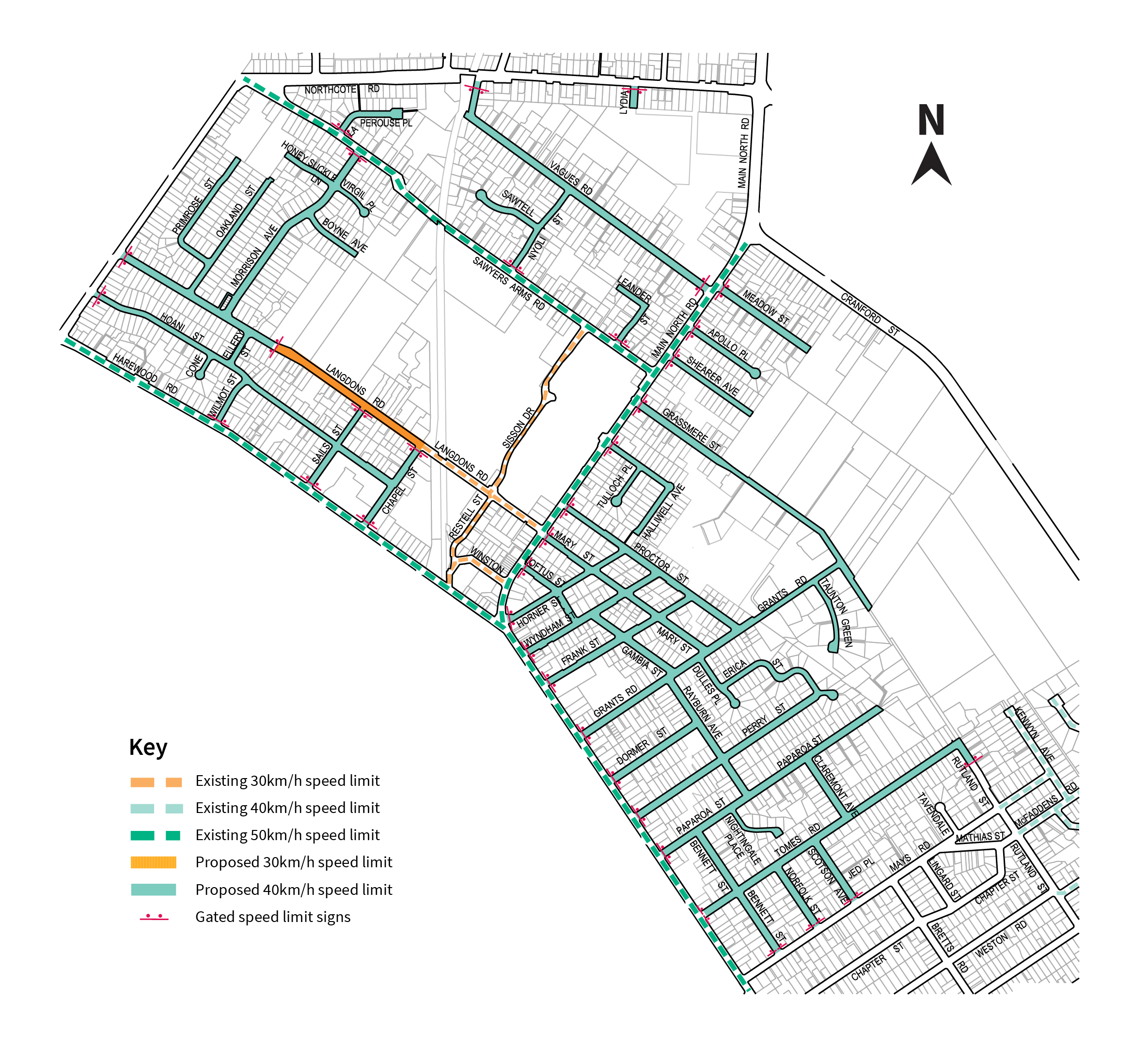Have your say on the proposed change and let's work together to create a safer neighbourhood for everyone.
Share this
Consultation is now closed
Consultation on the slow speeds neighbourhood - Papanui has now closed. People were able to provide feedback from 8 April to 3 May 2022. During this time we heard from 82 individuals and groups. The table of consultation feedback [PDF, 6 MB] is now available.
An updated plan was taken to the Waimāero Fendalton-Waimari-Harewood and Waipapa Papanui-Innes Community Boards on 13 June and 17 June 2022 respectively. These Community Boards recommend that Council approve the plans with a further recommendation of 30km/h speed limits on the following streets:
- The intersection of Main North and Vagues Road for children walking to St Joseph’s School (variable 30km/h limit)
- Sawyers Arms Road from Sissons Drive to the railway line
- An extension of Tomes Road, also covering a short section of Rutland Street
Council approved this plan without any further changes on Thursday 7 July. You can view the meeting minutes, which include the formal resolutions, online at christchurch.infocouncil.biz.(external link) You can also view the recording of the decision being made here.(external link)
Way safer for everyone
We’ve heard community concerns about vehicles travelling at excessive speed through Papanui streets and there have also been a number of crashes in the area over the past few years.
To address these concerns we’re proposing to reduce the speed limit from 50 km/h to 40 and 30km/h on selected streets in the Papanui area.
This change will make your neighbourhood safer, no matter whether you walk, scooter, cycle or drive.
Safe speeds
This proposed speed reduction is part of the Slow Speeds Neighbourhood programme focused on identifying areas in Christchurch where the community has expressed support for slower speeds. This is part of the central government Road to Zero programme. (external link)
Lowering the speed limit is one of the ways we can create safer streets for all users, create a sense of place within a neighbourhood and encourage other modes of active transport.
We’re proposing to reduce the speed from 50 km/h to 40 km/h and 30km/h on the road network shown in the below map.
Papanui area street plan (downloadable) [JPG, 1.8 MB]
The main purpose “Slow Speed Neighbourhoods” is to create a safer and quieter street environment for all residents and road users. Slower speeds are expected to reduce the occurrence of crashes and their severity if they do occur. The OECD’s International Transport Forum Speed and Crash Risk report(external link) outlines the relationship between speed and crash occurrence and severity. It shows that if impact speed increases from 30 km/h to 40 km/h the risk of fatal injury to a pedestrian or cyclist is about doubled. Other internationally adopted research supports the recommendation that relatively small changes in speed can have a high impact on crash survival rates.
Improving safety on local roads in Christchurch is a priority for Christchurch City Council and is also a national priority under the principles and guidance of the Road to Zero - New Zealand’s road safety strategy for 2020-2030. Road to Zero sets an initial target to reduce deaths and serious injuries on New Zealand’s roads, streets, cycle ways, and footpaths by 40 percent over the next 10 years. There are several focus areas being looked at nationally to achieve this, but where significant difference can be made is through having safe and appropriate speeds on our roads.
Feedback from residents is one of the main starting points. After receiving strong feedback from the residents of a certain locality/neighbourhood, staff investigate various other parameters like proximity to a high-speed location, presence of pedestrian generating activities nearby etc., to recommend a specific locality/neighbourhood for reduced speeds.
Christchurch City Council notify the Police through consultation and prior to a speed limit changing of the new limits. Council typically does request that monitoring of the new speed limit is undertaken at Police discretion, however has no control over Police resourcing/allocation of effort. Therefore, the task of increasing enforcement in the area sits with the Police. Council works closely with Police however and can raise this as a concern in this area.
Traffic calming measures such as speed humps are not specifically funded in Council’s Long Term Plan. The Minor Road Safety and Minor Safety Interventions programme budgets can potentially be used to fund traffic calming projects if there is a clearly defined road safety issue and/or crash history that needs to be addressed. However, most traffic calming projects often fall short when compared and prioritised against other candidate projects that need to be funded from these programme budgets. The idea is not to wait for crashes to happen. But, due to the availability of limited funding, locations with historically a higher number of injury crashes or higher crash risk need to be prioritised.
Various factors like crash history, crash risk, general vehicle operating speeds, existing road environment, nature of adjoining business or locations of interest. The available funding plays a role in deciding whether traffic calming can be warranted at any specific location.


